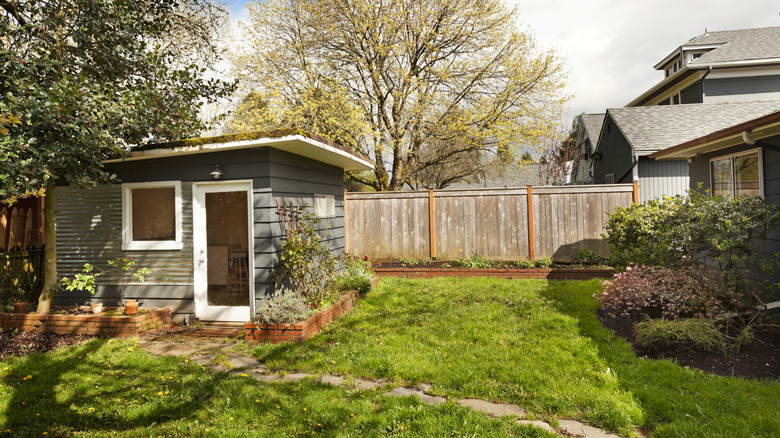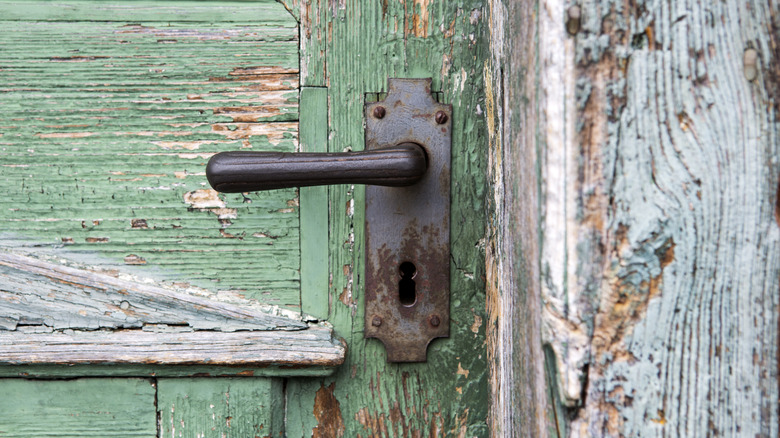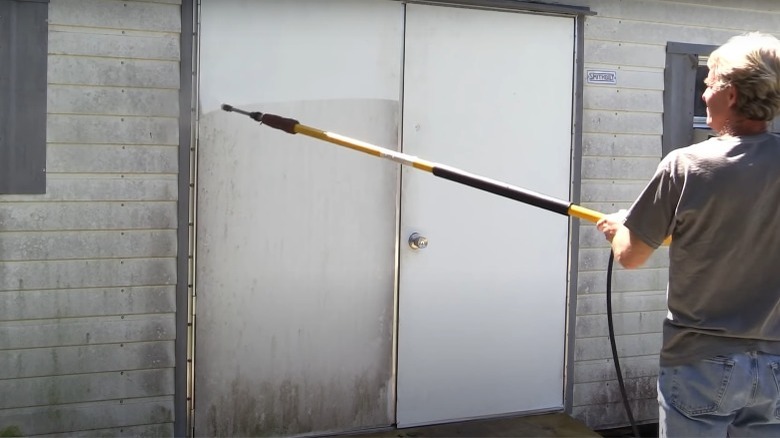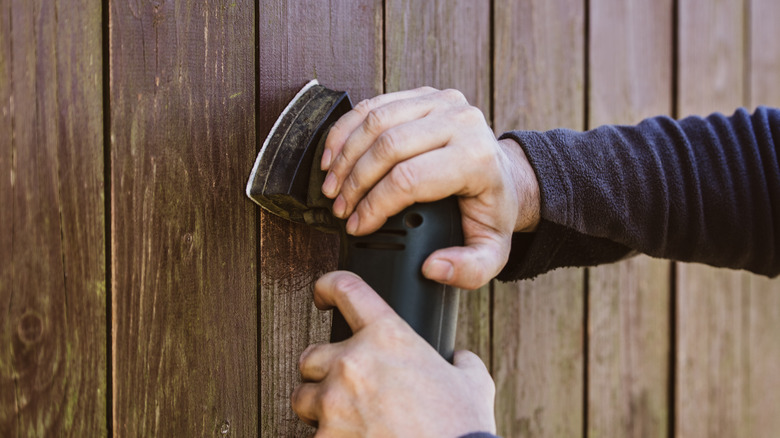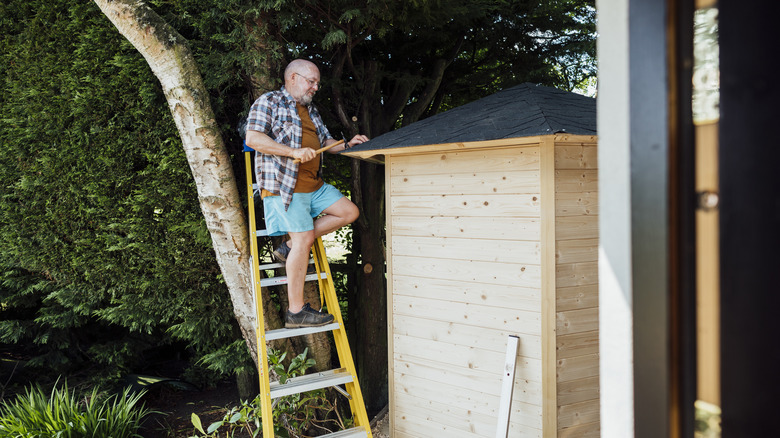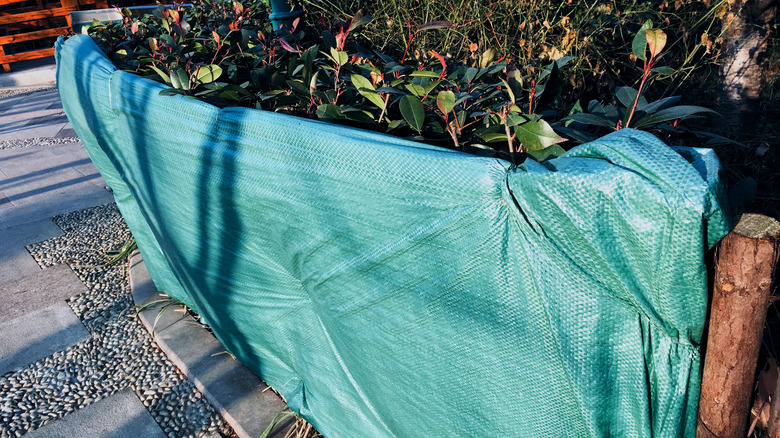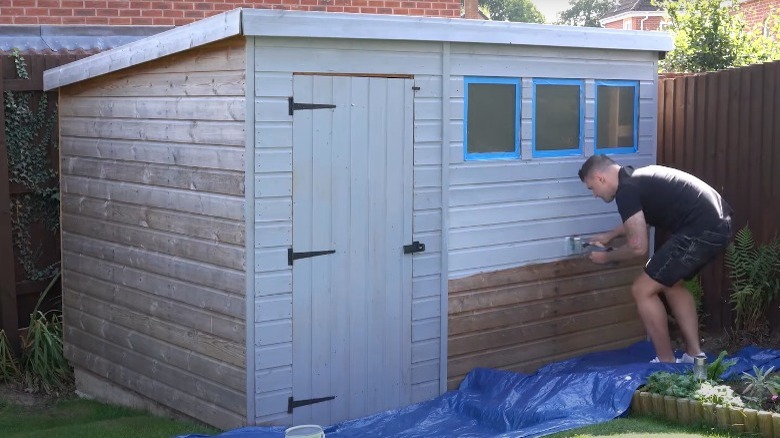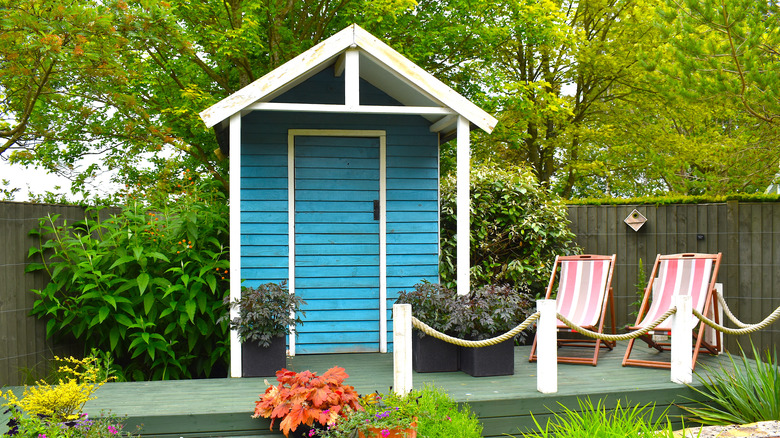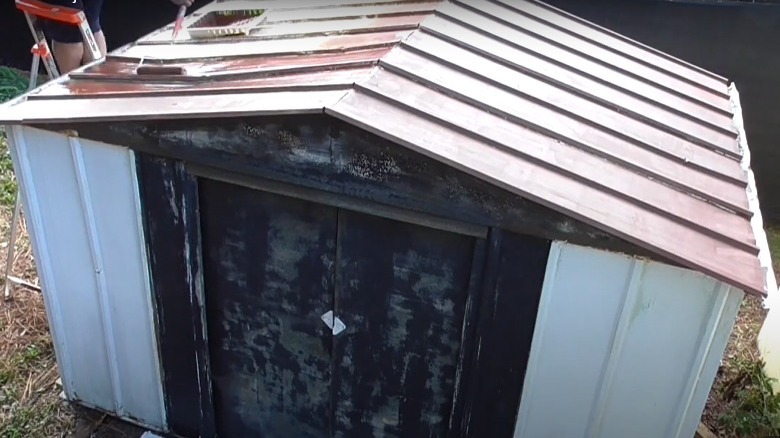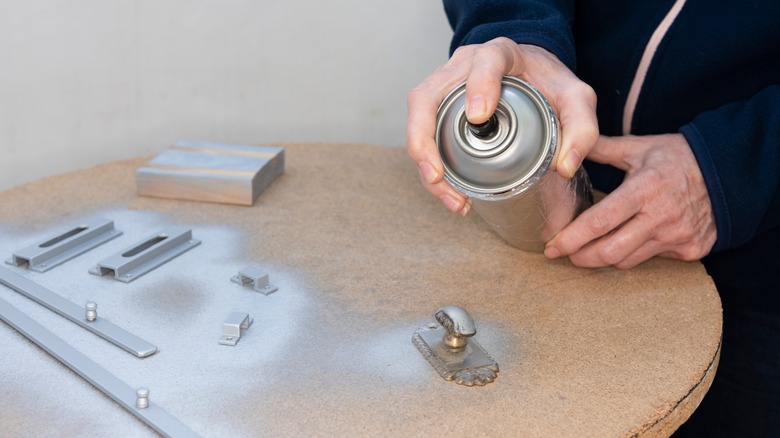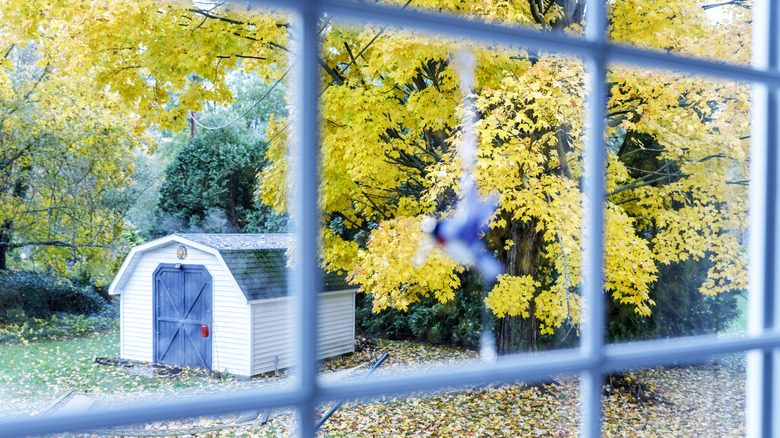What To Know Before Painting Your Shed
Has your shed seen better days? If it is faded, has peeling paint, or simply doesn't coordinate with the rest of your outdoor space, you may be thinking about painting it. Painting a shed is an excellent way to give it a new look and increase the visual appeal of your outdoor space, but there are some key things you'll want to know before you take on this exterior painting project.
While painting a shed is a relatively easy project that most beginners can tackle, that doesn't mean it is foolproof. No one wants to spend their time sprucing it up only to realize that the paint wasn't applied properly, their chosen color doesn't look good in their space, or the finish doesn't last as long as it should. Take just a few minutes of your time to learn more about how to properly paint your shed to avoid disastrous results such as these.
You should start by removing hardware, fixtures, and other accessories
While painting your shed is your end goal, there are several steps you'll need to take before you're ready to actually apply any coats of paint. One important step is removing any hardware or fixtures from the shed. While you could technically leave these up and paint around them, you won't be able to do as clean of a job, and the end result won't look as good. Removing the hardware will also allow you to paint it (which we'll get into below) or replace it if it has really seen better days.
If your shed has an exterior light or any other electrical fixtures, you should also remove them to leave a blank slate for a neater paint job. Make sure that you cut the power supply to any fixtures before removing them. Then, once they're removed, use electrical tape to cover any exposed wires to prevent an accident while you're working.
Give the shed a deep cleaning before it is painted
Another essential pre-painting task is to give your shed a deep cleaning. Unless you have a brand-new shed, then your structure has been exposed to the elements for several years and is likely covered with dirt, grime, cobwebs, and more. If you leave all of this gunk on the shed and just try to paint over it, the paint isn't going to adhere properly and is likely to end up looking scratched or bumpy.
Grab your garden hose, a wire brush, a bucket, and an all-purpose cleaner. Mix the cleaner with some water in the bucket, and use the brush to scrub the inside and outside of the shed vigorously. Depending on how much buildup there is, this task may take some time, and you may need to go over some areas several times. After cleaning, let the wood dry fully before moving on. This will likely mean waiting until the following day to get painting.
You will need to prepare and smooth the surfaces before painting
Next, closely inspect the surface of your shed. Is any of the old paint peeling? Are there any holes or uneven surfaces? If so, you'll want to address these issues before moving on. Let's start with peeling paint. If you don't remove peeling paint before adding a fresh coat, the new paint won't sit smoothly and will likely start peeling as well. Use a scraper to remove the areas that are flaking off, but work carefully to avoid damaging the wood.
There may also be some small holes or cracks on your shed wall that either were caused by removing the peeling paint or by age and exposure to the elements. Sand rough spots in the direction of the grain using sandpaper or a mini sander. Then, use some wood filler to close up any holes. Follow the directions on the packaging, and be sure to let the wood filler dry completely before painting.
Necessary repairs should also be taken care of
If you've been putting off more involved repairs for your shed, such as replacing a piece of the siding or patching a hole in the roof, now would also be a good time to take care of those needs. Once the shed is painted, you want it to be done. You don't want another maintenance task hanging over your head.
Moreover, if you wait to address a repair need, the shed won't look as nice as it could once you finish painting it. Taking care of needed repairs may add an additional work day to your schedule, but it will be worth the relief of knowing that the shed is completely finished and that you don't have any other big projects to deal with.
In addition to replacing siding or roof shingles, some sheds may have rotted wood caused by termites. If this is the case for your shed, contact a pest control company to remove them before you replace any of the rotted wood. You don't want to take the time to price up your shed only to have it become infested with termites again.
Don't forget to protect nearby plants and surfaces
You want the paint to cover your shed, not your patio, the grass, or any flowers or bushes in the yard. To avoid accidental splashes or spills in these areas, spend a few minutes to cover them. Use lightweight plastic sheeting for flowers and shrubs and drop cloths for the grass and any wood or concrete surfaces around your shed.
The importance of covering the grass and shrubs in your yard goes beyond the desire to keep them from getting speckled in colorful paint. Paint is formulated with different chemicals and additives that can damage your greenery. While most paints are unlikely to kill plants, some can still hurt their leaves, interfere with their energy reserves, and kill cell clusters. It is worth the few minutes it will take to cover the areas around the shed to keep them healthy and looking their best.
Before painting, you should apply a coat of primer
At a minimum, you should apply a coat of primer to exposed wood, stains, or other areas where you had to sand or fill in holes on the shed's surface. Primer covers up these areas and ensures they are ready to accept a coat of paint. If you skip this step, stains and other imperfections can show through your chosen paint color. This can leave some areas of the shed looking lighter or darker than others. The primer will also smooth out rough spots, helping ensure the paint goes on nice and smooth and doesn't look scratchy or bumpy.
In some cases, you may decide that it is necessary to apply a coat over the entire shed. This could be a good option if there were several areas of peeling paint or very weathered surfaces. When choosing a formula, make sure that you select an exterior primer. These products are designed to keep cracking to a minimum and help prevent mildew from growing.
Choosing the right color and type of paint is important
You won't be able to paint your shed if you don't have the paint you need. Don't just grab any can of paint from your garage or local hardware store, either. First, take some time to make sure you choose the right type of paint. It is essential to select an exterior paint. These paints are formulated to hold up well to different weather conditions and are less likely to fade or scratch than interior paints.
Beyond the type of paint you choose, you should also consider which specific color you want to use. Consider what you want your background to look like and whether your freshly painted shed is more of a focal point or something that fades into the background. Also, consider how close the shed is to your house, and consider a similar, or at least complimentary, color. Some people paint the shed and trim the same color, but you could also consider choosing separate colors for the side walls and the trim.
Once you've selected your paint type and color, paint the shed. You may find it easier to use a paint sprayer to cover the larger surface area, but you can always do it the old-fashioned way with a paintbrush or a roller. Once the first coat of paint dries, applying a second coat may be a good idea. You can assess the finish on the shed to help you determine if a second coat will be necessary.
Painting the shed's roof is also a good idea
The walls and trim of your shed may not be the only parts that need some TLC. If you have an older shed and haven't replaced the roof recently, it likely could also use some attention. Otherwise, it might stand out like a sore thumb against the rest of the freshly painted structure. To give it a facelift, use a paint specifically designed for roofs. These paints are specifically formulated for the stronger UV rays that hit them directly and are thicker than standard paints. Consider the material of your roof — such as wood or metal — to make sure you choose the right type of paint for it.
In addition to helping your shed look more aesthetically appealing, painting its roof will also offer several other benefits. First, it can improve the insulation in your shed, keeping it more comfortable on a very hot or cold day. A new coat will also make the roof more durable and help extend its useful life.
You can refresh the hardware by spray painting it
If you're keeping your shed's existing hardware, you can give it a quick update with a few coats of spray paint. Outdoor metallic spray paint will be ideal for this task, as they are formulated to resist rusting, fading, or chipping. Plus, the metallic finish will make it look like you invested in a new set of handles and knobs for your shed.
If you already removed the hardware, spray painting it shouldn't take long. Just make sure that you work in a well-ventilated area and apply at least three coats to fully cover each piece. Leave a minimum of 15 to 20 minutes of drying time between coats. If you didn't remove the hardware, you could still paint it with it attached to the shed. However, it might not turn out quite as nice. You'll need to carefully tape off a large area around each piece to avoid getting paint over the walls.
Always check the weather before you start painting
Before heading out to paint your shed, check the weather forecast. Depending on what it says, you might want to reschedule the painting for another day. Obviously, a rainy day won't be good for this project, but there are other considerations to keep in mind as well. Aim for a day when the temperature is between about 60 and 85 degrees. Warm but not hot temperatures in this range will help the paint bind properly and keep it from peeling or cracking.
You also want to avoid painting on a very windy day. If it is too windy, the paint may dry quicker than it should. This can affect the way it binds and looks. Finally, don't forget to keep humidity in mind when tackling any exterior painting projects. If it is too humid, it can interfere with some of the properties of the paint. It can lead to spots on the drying surface, which isn't what you'll want to see after putting so much effort into sprucing up your shed.
